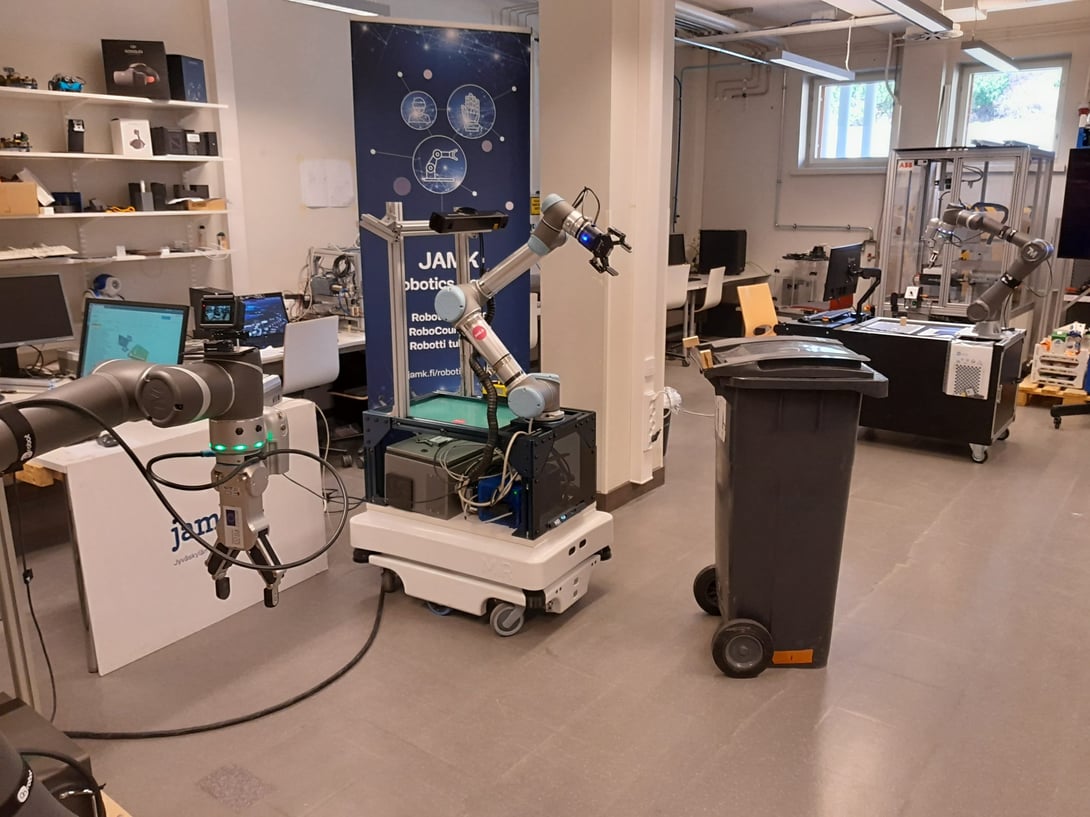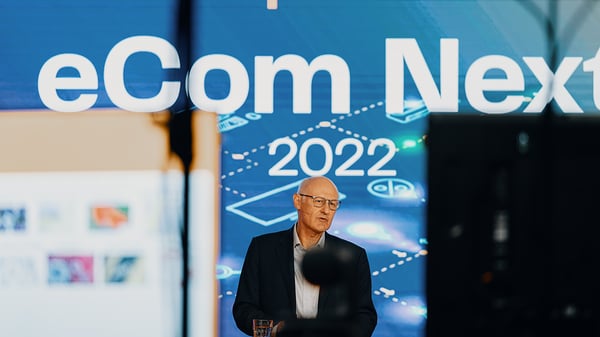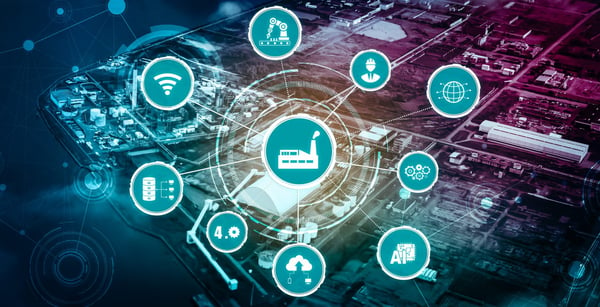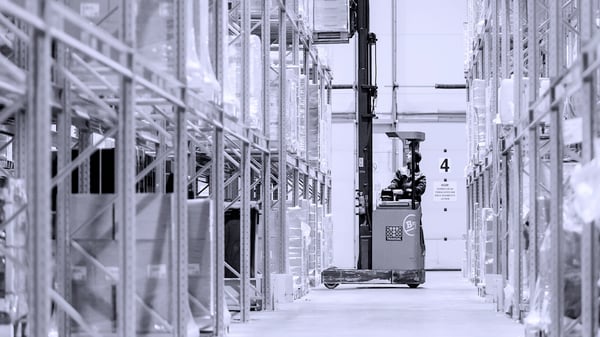Our customers are increasingly interested in robotic solutions that improve production efficiency
Mobile robots have traditionally required a highly standardized environment. A new innovation enables them to operate in changing environments.
Robots on Road
Transval has been closely involved in the innovative Robots on Road robotics project at the Jyväskylä University of Applied Sciences (JAMK). In this project, Transval's main focus was on machine vision-based positioning technology for mobile robots, which enables mobile robots to be used in a much more flexible and versatile way in a wide range of industrial environments.
Since 2017, we have been testing different mobile robot solutions. One of our key findings on their usability has been that the traditional machine shop environment is not suitable for today's mobile robots as such," says Markku Viljanen, Transval's Development Manager.
Our customers have a growing interest in robotic solutions that improve production efficiency," says Viljanen.
Non-standard environments are a problem
The reason is that facilities are constantly changing. Also, the pallets or bins that robots are supposed to pick up are not always exactly in the same place.
Mobile robots require a standard environment in which a certain proportion of the robot's assigned area remains free at all times. Our customers' environments rarely do. The spatial needs of different functions are constantly changing, and a dynamic layout that can respond to this is not entirely suitable for mobile robots," says Viljanen.
Among other things, Transval tested the robot's operation between the warehouse and production. Problems arose when the place where the material was brought in was not always available or the material to be picked up was not in a predetermined location.
More precise positioning with machine vision
Cooperation in the Robots on Road robotics project at JAMK (Jyväskylä University of Applied Sciences) brought Viljanen and project engineer Aleksi Kuosmasen together. Kuosmanen proposed an idea to Viljanen that a machine vision could solve the positioning problem of mobile robots.
Kuosmanen's innovation is based on the mobile robot's own system being given information about the area where it needs to go to perform the desired actions, and the machine vision pinpoints the exact location of, for example, a waste bin in that area.
Machine vision and robotics are what have interested me most in my automation studies. That's why I set out to explore the combination of the two in the Robots on Road project," says Kuosmanen.
Customers were immediately interested in robotics
Transval's customers have already been very interested in the application of the new robot technology and have been willing to pilot it in their own production environments. They want the new technology to improve production efficiency and speed up material flows.
Both in renovation projects for old facilities and in design projects for completely new production facilities, we always consider how smart mobile robots could be used to make production more efficient," says Viljanen.
This is how it works
Precise indoor positioning systems for mobile robots have not been available before. Jamk has been developing a machine vision system for years, which is now being harnessed for positioning mobile robots. Kuosmanen explains how the technology works.
We made an LED light source to mark the lid of the garbage bins, which also showed the machine vision system the direction of the bin. The exposure time of the machine vision camera was set so short that it underexposed everything in the image except the marker on the bin. This allowed the camera to identify the container. The system did not need to identify the bin, but the marker.
The machine vision system was not connected to the mobile robot as a subordinate actuator, but as an independent actuator. This was done because the mobile robot had already been connected to Transval's IoRT (Internet of Robotic Things) platform earlier in the development project. It was also easy to connect a machine vision system to this platform and use its data to control the mobile robot.
We have bluetooth-based systems, sensor solutions and call button systems in different locations. In addition to these, we were looking for a solution that could control the robot based on sensor data from industrial plants. The machine vision system automates the robot's operation so that workers do not have to intervene," says Viljanen.
Plenty of opportunities for further development
Kuosmanen sees opportunities for further development of the system in spaces larger than the one meter by one and a half meter area used by the machine vision camera in this project. Another line of development could be to use other indoor tracking technologies such as the Quuppa RTLS system using Bluetooth with mobile robots.
The use of a 3D camera is the third area we are developing. We are in the process of getting a camera with a range of ten meters and with centimeter accuracy in positioning.
So far, developments have focused on how to get the mobile robot to the desired location. The next step is to explore how the robot can pick up an example of a bin of rubbish. Options include an active robotic arm that can be integrated into the robot or a simple passive hook to grab the bin.
More applications for mobile robots
According to Kuosmanen, the biggest advantage of the project is that it breaks the traditional rigid and limited functionality of mobile robots.
The robots' own system can tolerate changes of about ten centimeters in places, but even with the machine vision system we are making now, we can achieve a one-meter by one-and-a-half-meter operating range where changes can occur.
Transval has welcomed the concept and is looking to develop it in its own business. The aim is to launch further joint trials with customers. Our customers are increasingly interested in robotic solutions that improve production efficiency," says Viljanen.
Read more about our industrial services
Read more about digitalization in industry Industry 4.0




